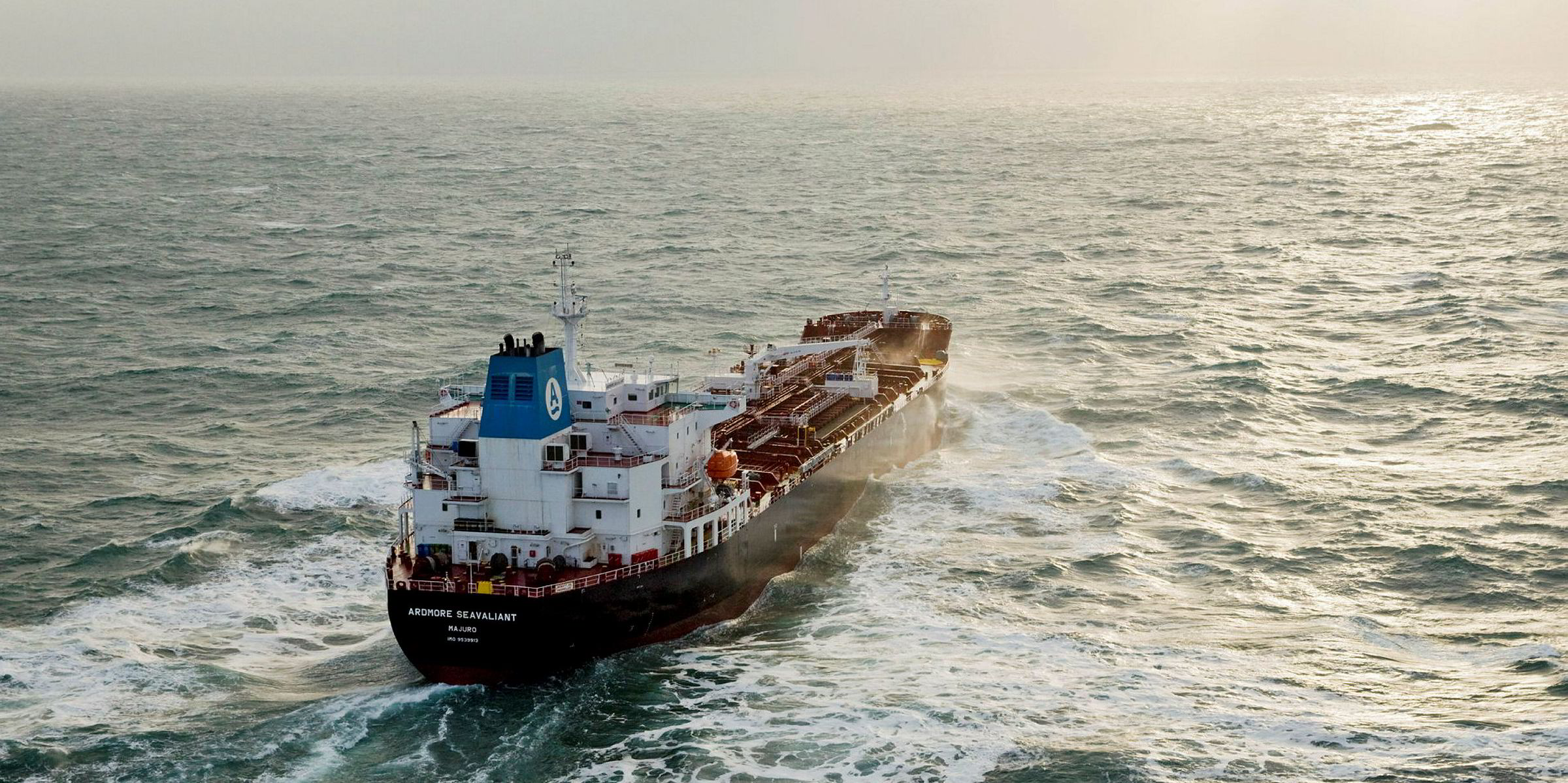Buoyant cargo flows, port congestion and reduced vessel supply have led to spectacular gains in earnings for product tankers, which are reaching multi-year highs across the globe.
Having underperformed market expectation for several quarters, the clean tanker sector is finally turning the corner with further bullish factors ahead, such as the IMO 2020 sulphur cap, according to several market experts.
“After a year of painfully low rates … the improvement is a Christmas Miracle,” Stifel said in a note.
Occasional spikes
There were occasional spikes in rates over the past two years due to regional imbalances in product trades, but the strength generally fizzled out quickly and failed to spread across regions.
This time, strong demand for both MR and LR vessels has emerged in different continents at the same time, leading to one of the best months for product tanker owners this decade.
The Baltic Exchange Clean Tanker Index, which takes into account MR and LR earnings in the world’s main trades, rose to a seven-year high of 894 last Friday from 614 a month ago.
Daily time charter equivalent earnings of LR2s on the benchmark Middle East-Japan route nearly tripled in the month to 7 December, while those of LR1s more than doubled. The MR triangulation rate in Atlantic increased by 136.3%.
Some of the strength is based on seasonal factors. Bad weather has led to congestion in the Turkish Straits and some ports in Mexico and China, tying up significant tonnage, according to some analysts.
There have also been several bullish market developments that could continue to support demand for product tankers in the coming weeks.
Atlantic boost
In Atlantic trades, Nigeria has been importing larger quantities of gasoline to avoid a fuel shortage ahead of next February’s general election, while the US Gulf is ramping up exports to Mexico and Brazil, some brokers report.
European naphtha flows to Asia have underpinned LR demand, and these vessels will find more employment opportunities because the Chinese government has issued more fuel export quotas for the final two months of the year.
According to Braemar ACM, the quotas comprise 760,000 tonnes of gasoline, 1.1 million tonnes of gasoil and 110,000 tonnes of jet fuel.
“The prospect of more gasoil exports from China, added to a widening East/West gasoil price spread, is potentially encouraging more East/West gasoil fixtures,” the brokerage said.
Moreover, Reuters reported seven to nine LRs were used as floating storage off Taiwan in recent weeks, because the buyers of the diesel cargo wanted to delay taking delivery, as they expected the price could fall further amid oil market weakness.
Spillover effects
However, the strong crude tanker markets since October — which help reduce the overall capacity of the product tanker fleet — could provide a longer lasting boost.
Crude tankers are no longer willing to carry clean petroleum products on their maiden voyages as earnings are attractive enough in dirty trades, according to Torm chief executive and executive director Jacob Meldgaard.
As crude tanker earnings were rising earlier than product tanker this quarter, Stifel estimated 17 LR2s switched from clean trades to dirty ones in November so they could take advantage.
“[As of 7 December] 42% of LR2s are trading dirty, which is the highest relative share since March 2015,” Stifel said. “Consequently, LR2s are competing less for LR1 and MR trades and the entire curve has stepped up.”
Even if the earnings prospects of crude tankers are to be dampened by Opec's supply cut, the coated tankers trading as aframax crude carriers may not revert back immediately.
“The switch from clean to dirty is seamless relative to the inverse, which requires extensive and time‐consuming tank cleaning or a complex sequencing of cargoes,” said George Los, head of tanker research at US broking house Charles R Weber.
“Units which make the switch to dirty generally remain there for longer than the inverse.”
Prospects in 2020
Analysts generally hold an optimistic view for product tanker markets next year with limited fleet growth, healthy oil demand and the IMO 2020 sulphur cap.
Based on Clarksons’ estimates, the product tanker orderbook amounts to 227 ships of 13 million dwt, accounting for 8.3% of the existing fleet in terms of carrying capacity.
Global oil demand growth will remain at a strong 1.3 million barrels-per-day (bpd) next year, supporting both crude and product tanker markets, according to Drewry lead tanker analyst Rajesh Verma.
Los has predicted many refineries will have heavier maintenance in the first half of next year in preparation for the IMO 2020 regulations, which could provide some headwinds for product tanker rates.
However, product tanker demand could soon be boosted.
Many oil analysts expect marine gasoil demand to increase by at least one million bpd in the initial periods after 2020, as it is an IMO-compliant fuel familiar to shipowners.
“The final two quarters of next year could be very strong and mark the start of a long-awaited sustainable recovery,” Los said.
“With IMO 2020, we may see more long-haul middle distillate trades from refining centres to bunkering hubs and the overall disruption should diversify global trades to the benefit of earnings.”







